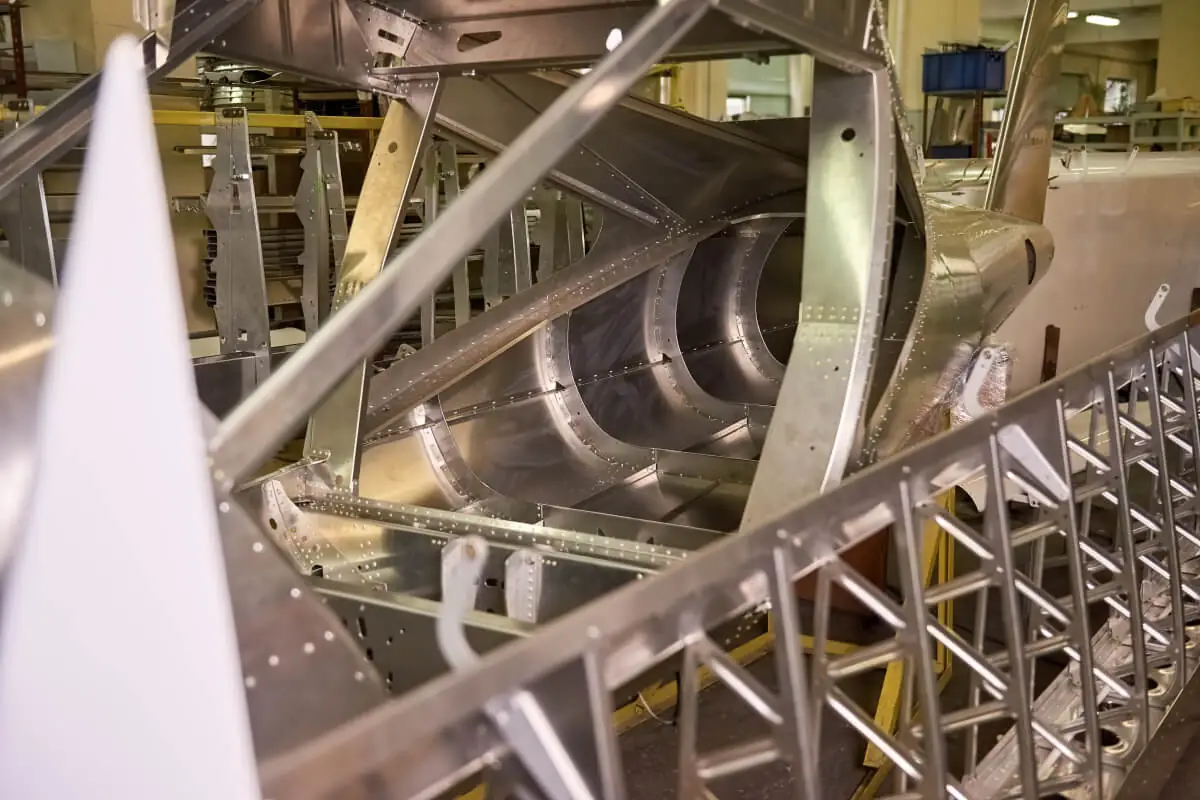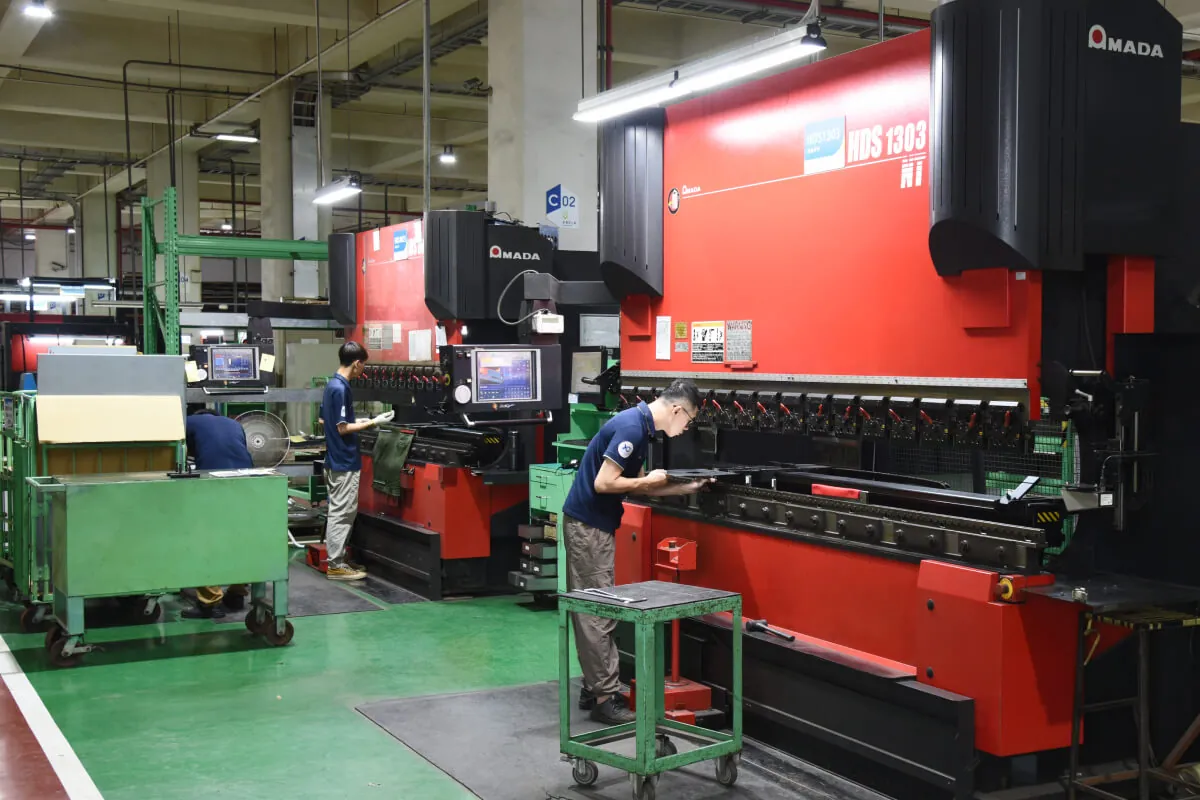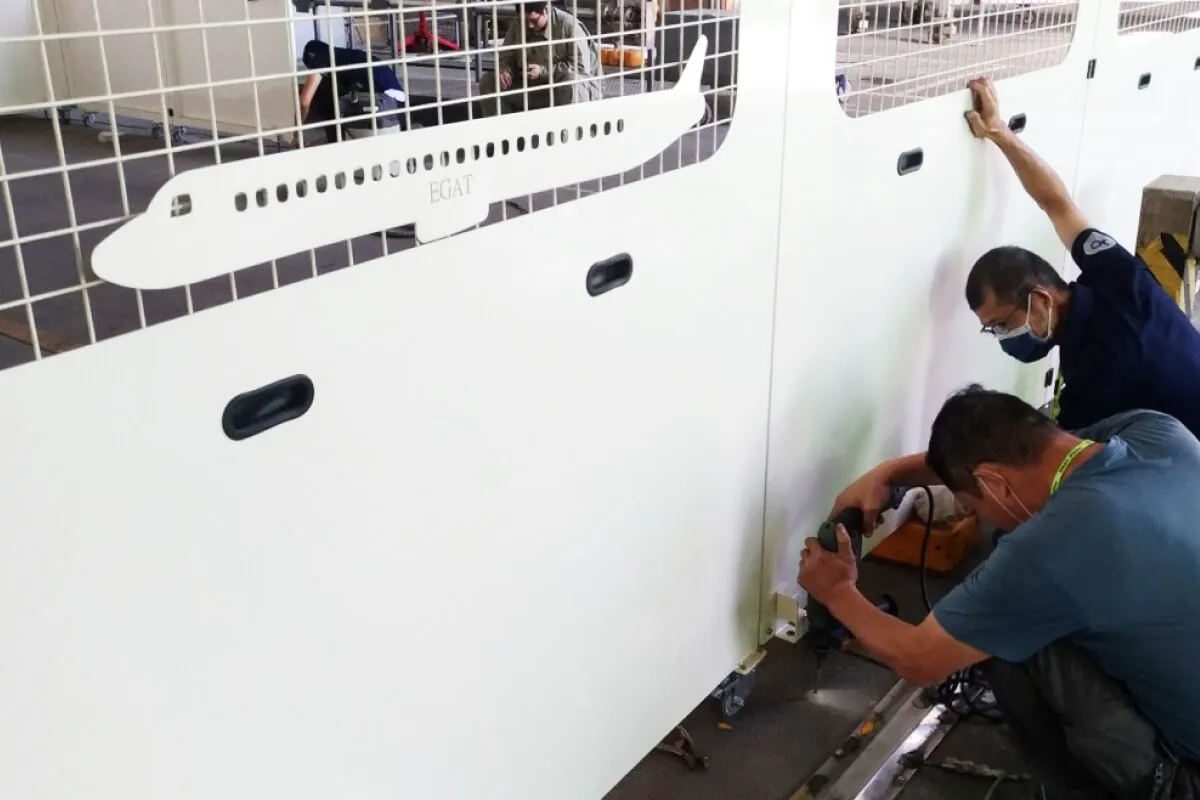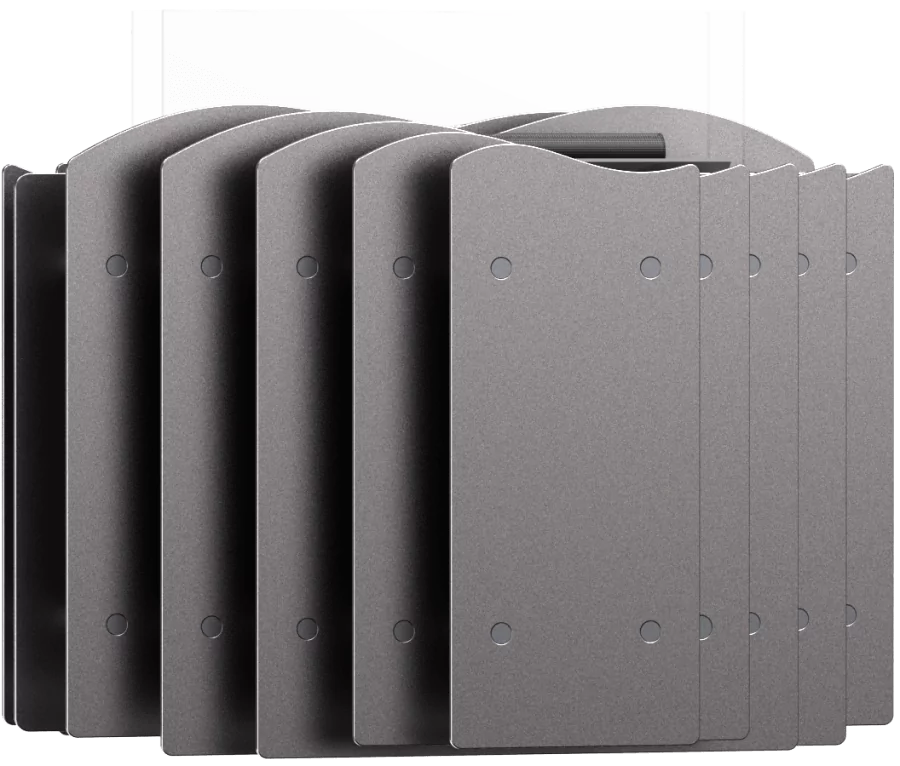Sheet metal fabrication starts with cutting, machining, welding, and assembly of sheet metal parts into functional products. There’s a lot more to it than that today, however, and in the sheet metal fabrication industry of 2025 CNC controlled bending and forming, integrated sheet metal inserts and precision combination laser punch cutting technologies have become the state of the art standards for sheet metal fabrication.
What is the history of sheet metal fabrication?
Sheet metal fabrication today utilizes sheet metal made from various materials, primarily steel, stainless steel, aluminum, and copper, but also exotic metals and alloys. Sheet metal is supplied by manufacturers in standard sizes and then cut, formed, folded, and pressed into individual components. These components are then joined together using techniques like welding, riveting, screwing, bolting, and using adhesives to assemble the final product.
People have been manufacturing all sorts of products using sheet metal for thousands of years, from hammered gold jewellery to suits of armor, but these were labor intensive, expensive methods used to create unique sheet metal products without cost-effective mass production capabilities. The advent of mechanised processes for sheet metal manufacturing, sheet metal laser cutting and CNC forming created a revolution in sheet metal fabrication and opened up a broad horizon of mass production capabilities for sheet metal parts manufacturing.

Sheet metal fabrication services in 2025
- Stainless steel fabrication
- Non ferrous sheet metal fabrication
- Sheet metal laser cutting processes
- Combination laser punch cutting of sheet metals
- Sheet metal bending
- Sheet metal welding
- Assembly of sheet metal fabrication products
The first historical rolling mill design that we know of for producing metal sheets is found in one of Leonardo da Vinci’s notebooks from 1485. His design for improving the process of making lead frames for stained glass windows appears to be the first documented record of machinery for sheet metal manufacturing, and the principles behind Leonardo’s design are the same as the ones used in designing rolling mills used for sheet metal manufacturing today.
The idea is very simple, to flatten metal by forcing it through rotating rollers, but it took several centuries for real-world technologies to catch up and make it a universal method for sheet metal manufacturing, culminating in the hot steel rolling mills and cold rolling processes that are used today for the mass production of sheet metal raw materials.
How is sheet metal fabrication used today?
Sheet metal fabrication is a versatile manufacturing process utilized across a wide range of industries, because high quality contemporary sheet metal fabrication processes create precise, durable, and lightweight components. Let’s take a look at five major industries that routinely use sheet metal fabrication today to make a wide variety of useful and essential products.
1. Sheet metal in the construction sector
In the construction sector, sheet metal fabrication is indispensable for creating essential elements like roof gutters, downspouts, flashing, and ventilation ducts, ensuring efficient water drainage, weather protection, and air circulation. Sheet metal fabricators manufacture sheet metal roofing, industrial building panels, screens, and safety guards. Sheet metal fencing and enclosures in industrial workshops and factories are an effective and inexpensive way of screening and protecting people from automated machinery.

2. Aerospace applications of sheet metal fabrication
Almost all modern aircraft structural components and airframes are manufactured from sheet metal, with very few exceptions. The high strength to weight ratio, resilience and ductility of sheet metal has made it the standard construction choice since the 1950s. The aerospace industry relies on sheet metal fabrication for manufacturing intricate aircraft components, such as fuselage panels, wing skins, and internal structural elements, where strength, weight reduction, and aerodynamic efficiency are paramount.
3. Automotive sheet metal forming
Within the automotive sector, sheet metal forming plays a pivotal role in producing complex body panels, chassis components, and internal structural parts, contributing to vehicle safety, aesthetics, and fuel efficiency. Sheet metal forming has reached a fine art of robotic automation in automotive manufacturing, with smart factories using a combination of CAE, CAD and CAM technologies to rapidly mass produce high quality, complex sheet metal components to meet the needs of contemporary automotive brands.

4. Sheet metal enclosures for electronics
The electrical and electronic industries have very high demand for sheet metal boxes, enclosures and casings providing protection, heat dissipation, and structural support. Sheet metal can be made into durable, lightweight, box shapes, which can be formed and assembled with inserts and brackets to make it simple to attach standard electrical and electronic components. From server racking and industrial switch boxes to domestic computer cases and coffee machines, sheet metal has the cost-effective versatility and strength to be the first choice for many manufacturers.
5. Sheet metal fabrication for the healthcare sector
The healthcare sector also benefits from sheet metal fabrication, as it’s used to manufacture sanitary equipment, medical device enclosures, and hospital furniture, where hygiene, durability, and ease of cleaning are critical.
Sheet metal enclosures protect expensive and delicate medical electronics and provide secure storage for equipment, chemicals and medications.
Beyond these major industries, sheet metal fabrication finds applications in countless other sectors, including agriculture (equipment components), energy (solar panel frames, wind turbine components), and consumer goods (appliance parts, furniture components). Adaptability and cost-effective processes enable sheet metal fabrication providers to produce high quality parts and finished products that meet the demands of modern manufacturing.

Taiwa: sheet metal fabrication for 2025
Taiwa has 20 years of experience in precision sheet metal fabrication, using the latest Japanese AMADA press brake technology and AMADA laser cutting and punching combination machines to make your products competitive. AMADA Fiber and CO2 laser cutting technology delivers the highest precision available in 2025 and AMADA CAD/CAM design software models every bend digitally in advance to allow for deformation and spring-back delivering cost-effective precision to replicating your design.
- Expert, comprehensively trained designers & machine operators
- Friendly customer service & skilled engineering support teams
- All Taiwa machine operators have at least 300hrs of training and examinations
- TTQS Workforce Quality Certification (Taiwan)
- ISO 9001 & ISO 14001 certified
- Extensive library of dies & tooling reduces set up costs
- Precision Japanese AMADA cutting, punching & forming machines
- Skilled assembly team for manufacturing complex designs
- Long standing expertise in materials & design for manufacturability
- Capacities up to 3000 mm sheet length for 0.3 mm to 20 mm sheet thickness
- Flatness maintained to 0.2 mm & verticality within 0.15 mm
We maintain a diverse library of tooling, dies and forming jigs. This reduces start-up costs for new metal folding and bending projects as we usually have existing tooling we can use for your project without incurring additional costs. The efficiency of our green manufacturing processes delivers significant savings in energy consumption and waste. Contact us to discuss how our state-of-the-art sheet metal fabrication services can bring your sheet metal design to market faster and with better results than you ever thought possible!




